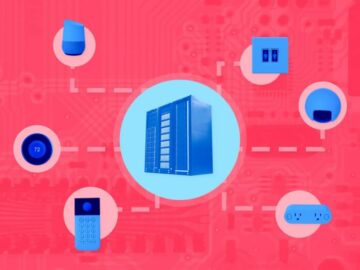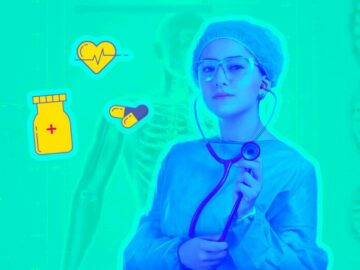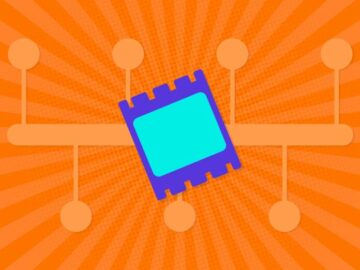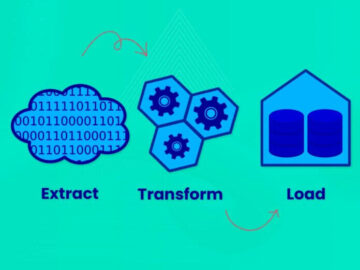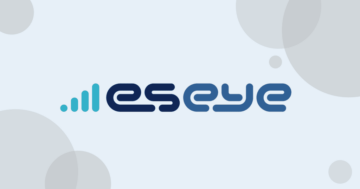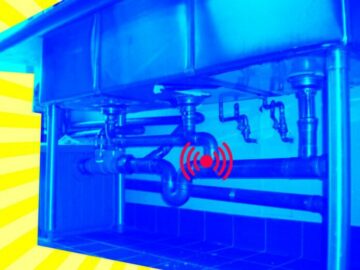
This week on the IoT For All Podcast, SODAQ CEO Ollie Smeenk joins us to discuss the sustainable IoT space and some of the biggest technologies enabling it. Ollie shares the evolution he’s seen IoT and the sustainable IoT front undergo so far, including some of the most impactful technologies, like energy harvesting, that are driving the adoption of more sustainable IoT solutions. He also speaks to more of the specifics – including low-power technologies and the use cases that fit it best, energy harvesting, and battery-less technology.
Ollie also digs more deeply into energy harvesting – the use cases where it works best, some of the obstacles to adoption, and where the industry is going as a whole.
Born in the Netherlands, raised in Tanzania, Ollie Smink installed a large base of weather monitoring stations across Sub Saharan Africa and is now CEO of IoT hardware company SODAQ. He has a passion for positive impact driven by physical products and technical innovation, especially using solar energy harvesting and low-power hardware in countries with limited infrastructure and focusing on environmental challenges.
Interested in connecting with Ollie? Reach out to him on Linkedin!
About SODAQ:
SODAQ is a market leader in low-power sensing and tracking, with expertise in embedded hardware, software, industrial design, and scaling technical innovations. Mainly focusing on B2B and governmental clients, SODAQ aims to develop products that significantly reduce environmental impact of value chains in Transportation, Construction, Agriculture and Offshore industries. All this must be achieved with devices that have minimum environmental impact in their life-cycle and therefore SODAQ invests in making products that are planned to work perpetually/forever. A key example is the TRACK SOLAR, an asset tracker that works globally and can be attached to any asset, working autonomously. Another is the Locator One, a device that autonomously measures GNSS position on a sub-cm accuracy in 3D in order to detect tiny deformations in objects or surfaces, mainly in construction. SODAQ can offer an end-to-end solution including device management and visualisation tools for the data, but is completely flexible to work with any partners in the provision of its hardware products. 50% of the business is focused on custom development, while the other 50% is focused on selling products. Most products include no mains power source, work with LPWAN technologies and/or Bluetooth. SODAQ sees a world without batteries.
Key Questions and Topics from this Episode:
(01:07) Intro to Ollie
(02:49) Intro to SODAQ
(05:55) What evolutions have you seen in sustainable IoT?
(08:23) What kinds of use cases is low-power technology enabling?
(11:21) What is energy harvesting?
(12:48) When is energy harvesting a good fit for a use case?
(18:34) What’s prohibiting the growth of this sustainable IoT technology?
(21:29) What challenges are your customers facing? What’s the market look like?
(23:58) Where do you see the industry going, technology-wise?
(26:03) How can listeners reach out and learn more about SODAQ?
Transcript:
– [Voice Over] You are listening to the IoT For All Media Network.
– [Ryan] Hello everyone, and welcome to another episode of the IoT For All Podcast, I’m your host, Ryan Chacon, and today’s guest is Ollie Smeenk, the CEO of SODAQ. Ollie has a very unique background. He was born in the Netherlands, raised in Tanzania, built and installed weather monitoring solutions in Sub-Saharan Africa, and now as a CEO of an IoT hardware company, focused on low power sensing and tracking. So we’re gonna talk a lot about that, low power sensing and tracking, we’re talking about battery devices, we’re gonna talk about energy harvesting, and just sustainability as a whole across IoT. But before we could do that, if any of you out there are looking to enter the fast growing and profitable IoT market, but don’t know where to start, check out our sponsor Leverege, Leverege IoT solutions development platform, provides everything you need to create turnkey IoT products that you can white label and resell under your own brand. To learn more, go to iotchangeseverything.com, that’s iotchangeseverything.com, and without further ado, please enjoy this episode of the IoT For All Podcasts. Welcome, Ollie, to the IoT For All show, thanks for being here this week.
– [Ollie] Thank you so much, Ryan, I’m glad to be here.
– [Ryan] Yeah, absolutely looking forward to it. So I wanted to kick this off by having you talk a little bit more about your background experience a bit, from everything that I read, it’s a very unique background. You’re born in the Netherlands, raising Tanzania, you’ve done work in Sub-Sahara Africa, and now you’re the CEO of an IoT hardware company. And I’d love to just kind of hear more about that background and that journey, and kind of what brought you to SODAQ.
– [Ollie] So my pleasure to give an intro. So I was born in the Netherlands, and at three years of age, I moved basically to Tanzania, in East Africa, with my family, with my parents, and my younger sister, and spent the majority of my childhood there. And had an amazing upbringing, and got to experience two cultures, which really shaped me, spent a lot of time, of course, in the Netherlands as well, and around age 16, moved back to the Netherlands, and my father is an engineer and together we always worked on different projects, and with that also started playing around with Arduino boards, and kind of got into developing hardware. When I was back here in the Netherlands in school, we decided to look for projects that we could make impact with in East Africa, and we stumbled upon an opportunity to help some farmers with weather monitoring stations, and we kinda combined the knowledge on Arduino and what we learned about low power embedded hardware, with our impact drive. And that got us started with IoT actually.
– [Ryan] Fantastic, so how did you end up with SODAQ then? Was that a company that, I don’t know if I have this information, but were you a founder of SODAQ? Or was that, did you come in to SODAQ later on?
– [Ollie] So my father and I actually started the company together.
– [Ryan] Fantastic.
– [Ollie] And so the whole project with weather monitoring branched off into its own company, so initially we started off, we started off building some hardware for monitoring weather conditions, rain, temperature, wind, and such, and we had to build our own hardware, to use solar power to get enough energy basically to measure these conditions and then to send it to the internet. And there was mobile connectivity available, very readily available in most of Sub-Saharan Africa, and we realized that with that type of hardware, that type of low power hardware, there was many other applications. So that’s why we founded SODAQ, we actually did a Kickstarter campaign for a development board, that others could start making things, and at the same time we launched another company, whereby we actually installed across six countries, these weather monitoring stations, and helped a lot of farmers in research organizations.
– [Ryan] So where is, so coming from that story, which is fantastic by the way, where’s SODAQ now, like what has transitioned from? Or what has I guess grown from then to now? What is the focus? How has it changed? Just kinda give us the full landscape there.
– [Ollie] So I think the term Internet of Things, really started coming up in the early days of SODAQ, around the same period, and what we were doing at the time, was investigating what type of applications we could use these low power hardware technologies for, and the energy harvesting from the sun, we had our own web shop, we were really interacting with a lot of cool companies and individuals around the world, really the early adopters of the Internet of Things. And over time, we got requests from bigger and bigger companies, to develop and solutions for them. So to really design custom hardware and build software, and in an even later stage, just a few years ago, we started adding industrial design, so making enclosures, and also adding basically the connection to the cloud more as well. And we started adding more to our technology stack and that’s way as we got further, and where we are now, is that in the past eight years, since we founded, we’ve done more than 200 different development projects, some of them you can see behind me here, and we’ve launched now in the last year, four of our own products. So we’ve gone from basically providing developers with kits, to making solutions for companies, to now making solutions for ourselves to bring to market.
– [Ryan] That’s fantastic, I love that story. Appreciate you walking us through that, that’s great. I wanted to see if you could expand on a couple of the topics that you talked about. You talked about energy harvesting, we talk about the low power elements to all of this, which then also potentially lead into the discussion around like battery lists devices. What have you seen since over the past eight years, from an evolution standpoint, when it comes to the developments in IoT, the developments in like sustainable IoT? What have you kinda seen happen, over the course of the last eight years or so to where we are now?
– [Ollie] So on the communication side, many new protocols have been brought into the market. So in the low power wide area networking space, we’ve moved from 2G networks for example, which are not low power at all, to things like LTE-M and Narrowband IoT, we see that the telco organizations have put in a lot of work to make that possible, so have the module manufacturers, in the early days we were making sort of components that we could plug onto our development boards, for different communication protocols, and we’re working for example, with SIMCom modules, over time, we saw that many other companies started entering the space, and now for example, Nordic Semiconductor or U-Blox, or Quectel have really low power modules. So that’s really changed. In another protocol with LoRaWAN, we’ve seen a huge growth in network availability, and also in the quality of the network. So that’s more on the technology side, and low power side, we’ve gotten better and better at using these technologies, creating better algorithms for using the device as little active mode as possible. So we have kinda the saying, that we tried to sleep as much as possible, working only when necessary, and then communicating as little as we can. So being in that sleeping mode basically, allows us to consume next to no power. And that allows us to actually create products that can harvest energy from the sun, or other sources like motion or radio frequencies.
– [Ryan] Right.
– [Ollie] And that in turn, then allows us to work towards having devices without batteries, because batteries are highly polluting, and I think it’s nice to show you that we, for example, use these very completely flat lithium-ion supercapacitors
– [Ryan] Okay.
– [Ollie] And these are replacements for batteries that we’re now implementing in products.
– [Ryan] Fantastic, I wanted to kinda take a couple of those topics and dive into them a little bit. So, on the low power side of things, when it comes to tracking and sensing technologies, what does, just for the general landscape and maybe those who are a little bit unfamiliar or they’ve heard of the low power elements to IoT, but not really sure as to the value they provide or what they’re kinda driven towards. Talk a little bit more about, what low power solutions and tracking, and the technologies behind them are enabling, and what kind of use cases, are low power solutions more ideal for?
– [Ollie] Very good question. So we have seen that tracking has really been used for example, in vehicles that have continuous power available, whereby low power is not really necessary. So trucks for example, have been tracked for many years already, and where we see many opportunities and use cases for tracking and are working in many different customer applications, is in the need to track assets or whether they’re moving, or not where there is no power source available. So I can give you an example, you can see here on this side, there’s a larger solar power tracking unit.
– [Ryan] Yeah.
– [Ollie] We use those specifically for truck trailers. So rather than the truck itself, these swap bodies are exchanged between different trucks, and they wanna know how many kilometers those drive, but there’s no source of power. So to measure the location as often as possible, with a small solar panel, means you really need to use very little energy.
– [Ryan] Okay, makes a lot of sense. So when would, I guess when we’re talking about, just the full spectrum of different types of use cases that we’ve seen in IoT, so ones that are requiring more power or those use cases that are requiring to probably send data more often, send bigger kinds of data more often, things like that. And then our low power side we’re seeing kind of the opposite. Is that relatively accurate?
– [Ollie] Correct, so there’s work being done on reducing the amount of overhead that needs to go into a payload, that’s in a message that is sent.
– [Ryan] Okay.
– [Ollie] So the less additional information on top of just let’s say, the GPS coordinates, the more energy use and waste.
– [Ryan] Right.
– [Ollie] There’s protocols like power save mode, or extended discontinuous receive mode.
– [Ryan] Okay.
– [Ollie] Which allowed the network and the device to have an agreement, on when the communication will happen, and therefore you don’t need to have a handshake and reconnect every time that you wanna send a message.
– [Ryan] Gotcha.
– [Ollie] So those are some ways in which we’re saving a lot of power.
– [Ryan] Okay fantastic. And then let’s move into kinda where energy harvesting, kinda plays into it from that standpoint, where does that really fit in, in your mind? I guess start off by, can you just explain a little bit more what it is exactly for those who may be a little bit unfamiliar? And then the value and the benefits that energy harvesting is bringing to the IoT space and potential use cases.
– [Ollie] So energy harvesting basically means, that the device that we’re using, is fully powered by energy that it gathers from sources, outside of the device, without having to be recharged, or connected to a fixed power source. So the device itself can be fully autonomous.
– [Ryan] Okay.
– [Ollie] So you have for example, a solar panel on a device, that gives energy whenever there’s sunlight, to charge for example, a supercapacitor or a rechargeable battery, which then has enough energy in it, to continuously operate the device. So to measure its location, its temperature, and then to send that to the internet. And so we for example use an accelerometer inside the device that detects when there is motion, and from that knowledge, we can assume that it’s more important, when the device is moving to start tracking it more often. Because if it’s not moving, then you can assume that it’s in the same place.
– [Ryan] Gotcha, so then when we’re thinking about, the application of the technology, and fitting it into potential use cases, how do you have that conversation with potential customers around when energy harvesting is a good fit for what they’re building? Or I guess maybe the way to answer this would be, to talk about, what types of scenarios energy harvesting would not really fit in?
– [Ollie] Yeah, very clear, what traditionally was done was a customer would calculate, how many messages a device could send over its lifetime, and then plan how long the device would last. So you would have a device with, for example, AA batteries in it, that consent 10,000 messages, which may be spread over three years, and then the device has done, would have to be open batteries replaced, or completely removed. And so whenever there’s an opportunity to work with sunlight, then we can have a conversation quite easily with our customer. So anytime we open up discussions with any interesting company to work with, we communicate from the beginning that, the sustainability and impact of our solutions is our primary concern.
– [Ryan] Okay.
– [Ollie] So our objective as a company is to use, the Internet of Things, to improve efficiencies in different business cases, saving resources.
– [Ryan] Right.
– [Ollie] And the objective should also be, to then not create a new problem of electronic waste. And as soon as you drop that information, the customer is much more inclined to, investigate the option for energy harvesting.
– [Ryan] Right, okay, and so that then ties into the conversation around devices without batteries, and how that kind of fits into the sustainability of IoT, the pollution element you mentioned earlier, talk a little bit more about that. How do devices operate without batteries? And where does the technology today kind of stand in making that a more regular thing or a regular fit within use cases?
– [Ollie] When looking at the need for power storage, or power availability, we need to look at what is the total amount of energy that our device needs, but also what are, for example, the peak energy usage moments. We look at peak currents, and where you will see that instead of batteries capacitors are really useful, is in handling peak currents. However, traditional capacitors, will not hold energy for power for very long. So they have a very fast self discharge. And so we have this term of battery list devices, as a sort of core element of what we do.
– [Ryan] Okay.
– [Ollie] Partly because we want to eliminate the use of batteries completely, but also because we wanna challenge the notion around batteries. So what you’ll see is that, with a 3D printed completely flat batteries, we can make these kinds of smart labels, that are completely thin cellular connected.
– [Ryan] Okay.
– [Ollie] You’ll see here behind me, a bit more of the inside, so you see the PCB here.
– [Ryan] Yeah.
– [Ollie] You see the antenna, you see the battery, which is completely like that, this is a cellular connected device. and it’s then used for example, parcel tracking, we’ve got all sorts of pageants here with me, and when the parcel is open, we actually detect the parcel is open because the seal breaks.
– [Ryan] Wow, okay.
– [Ollie] So in this case, we are using a battery, or we’re using a battery that’s fully recyclable. So what we do, we have two components, we have the top and the bottom part, the bottom part is recyclable with materials like zinc for example, which are also used in medicines for example, and then the top part is the electronics, which we can completely reuse.
– [Ryan] Fantastic, okay.
– [Ollie] So that’s one example, and then the other is, when we have for example, a tracker like this one, just one power instead of a battery a supercapacitor.
– [Ryan] Okay.
– [Ollie] An indefinite number of charge cycles. So rather than like your smartphone, you have it for three years, and then you really do have to replace it because the battery isn’t functioning anymore.
– [Ryan] Right.
– [Ollie] That’s because of the limit to the chemistry inside.
– [Ryan] Okay. and large cycles it can handle, and these capacitors can actually handle thousands of times, as many charts cycles, therefore never having to be replaced inside of the device.
– [Ryan] So when the capacitor is being charged by the sun, how long does that last? You said a lot of them kind of quickly use up their charge, but is this something that it stores, and kind of holds onto until it’s needed to activate and send data, or be utilized by the device? Or how does that work?
– [Ollie] So we have two types of capacitors. We have standard capacitors, which don’t hold charge very well, but are very fast at charging and discharging.
– [Ryan] Okay.
– [Ollie] Those are used on all sorts of electronics. You have really small capacitors that are used actually for power regulation on electronics.
– [Ryan] Sure.
– [Ollie] These capacitors that I’m showing here, actually have lithium ions inside, so it’s a hybrid capacitor, it’s kind of in between a battery and a capacitor, so it and has the benefits of charging and discharging quickly, So you can charge your entire device in under two minutes rather than a few hours, and it has an almost indefinite number of charge cycles.
– [Ryan] That’s awesome, that’s really cool, thanks for showing that, that’s pretty neat, I like that. I wanted to transition just slightly to a different area of conversation before we wrap up, and it’s really around, in this area of kind of sustainable IoT that we’ve been talking about for a few minutes here. Where are you seeing the biggest challenges? And maybe kinda tying that into more industry wide challenges too that you’ve seen over the last couple of years, or maybe even currently where we are now, or I guess prohibiting certain adoption of technologies or some of these technologies scale more quickly than we’d like them to. Just what are you seeing from your standpoint regarding those challenges right now?
– [Ollie] Thank you for that question. One of the things that will be on everyone’s mind is the current component shortage, we see that because of some very weak links in our supply chain, we’re reliant on certain paths, that when there is let’s say, a deficiency of components, we’re unable to get them.
– [Ryan] Right.
– [Ollie] Which causes people to over purchase high amounts of stock to reduce their risk, and that really puts a strain on the whole market. That’s one of the biggest challenges also to sustainability, because what do we wanna work towards, is a model whereby we can innovate as quickly as possible.
– [Ryan] Okay.
– [Ollie] And if we need to buy large quantities of stock to produce to have the safety let’s say, to be able to provide devices to our clients, then it’s much more difficult to go through innovation cycles, because we need to, rather than having different types of products and changing them over time, instead of that, we’re having more of the same products. That’s one big challenge. Another one is the cost of new innovations. So the new modules that come out that have lower power functionality, or these capacitors that I’m showing you, they’re produced in lower volumes, than the traditional less low power, and less sustainable solutions, also less widely adopted. Something that I really liked to, and this is maybe something we can share, in the communications around this podcast, is an article about flexible PCBs,
– [Ryan] Okay.
– [Ollie] And this inability comparison of a rigid versus a flexible PCB.
– [Ryan] Okay.
– [Ollie] And that there are significant savings to be had, but because the whole industry works around rigid PCBs, the cost is lower, the time to market with a product is quicker, even though it’s much less sustainable. And we’re trying to make customers aware of that, so that they’re willing to be more patient and potentially in the beginning pay more for solutions, to bear that cost rather than that the environment needs to bear that cost.
– [Ryan] Gotcha, what have you seen coming to when you talk to customers? What are the challenges that they’re coming to you with? How does that kind of fit into the overall view of the market regarding the challenges that we’re kind of facing? What are they kind of coming to you and kind of explaining that are big issues for them, that they’re seeing from their angle before they start working with you?
– [Ollie] One example that I really like is that, we work with a company that’s in the agricultural space. And what they do is they provide materials to farmers. And for example, agrochemicals, and they are required to ship these materials in like large containers, whether it’s for liquids, or for seeds, and in that process, they don’t have full control over the supply chain of where those containers are.
– [Ryan] Okay.
– [Ollie] And that causes them to have to have, a really large excess stock of these containers, which means that there’s a bunch of containers standing around which plastic was needed to create them, and they come to us to on the one hand, look at how can we reduce the waste in that way, and use tracking to know where everything is, and optimize that supply chain, and on the other side, we tried to add innovative features. So what you’ll see is that for example, a container of liquid may be so cheap that it’s not worth adding a tracker. So let’s say the container costs 200 euros or dollars to make.
– [Ryan] Right.
– [Ollie] And the tracker costs maybe half or a bit less than half of that, then the business case is hard to prove itself. But by for example, measuring the quantity of the liquid, or the amount of liquid inside the container, by using, in our case radar, to measure the distance to the top of the liquid, we can give additional information and then the customer, or our customer can go to their customer whenever they know that the liquid has almost completely been used up, and provide marketing information and say, “Hey, isn’t it time to buy new product.” And then it makes the business case worth it. So that then allows us, to get more of that sort of circular model, of getting those containers back to the customer, rather than having to continuously produce new containers for their product shipment.
– [Ryan] That’s fantastic, I appreciate that. That’s really good insights there to kind of get a sense of what people are seeing as challenges and kind of how this is all fitting together. Now, let me ask you as we wrap up, where do you see the industry going kind of over the next number of months to a couple of years on the sustainability side? Like what do you see technology wise that’s maybe coming down the pipe you’re most that you’re most excited about, that’s really gonna start to enable more adoption on this side of things?
– [Ollie] On the one hand, I see a big push on the sustainability side, in the sense that like carbon equivalent emissions, need to be reduced on all aspects of companies, so they will also look at using IoT to reduce their waste and their emissions, and I think there that it will be really beneficial for ourselves, but also other companies to focus on that, as a leading discussion point with customers.
– [Ryan] Sure.
– [Ollie] On the innovation side, I see a lot happening in the machine learning, on the device side.
– [Ryan] Okay.
– [Ollie] So we can do much more with that little bit of energy, and that little bit of processing power we have, on an embedded device, making them smarter and making them by, for example, updating the firmware remotely on a device, and adding more tricks into it, for getting more data out of it, we can enable many more use cases. So each individual IoT device will only become more valuable over time.
– [Ryan] Yeah.
– [Ollie] And then maybe lastly, where I see a really big rise at the moment is in the whole space of satellite IoT communication.
– [Ryan] Sure.
– [Ollie] So everywhere where there is currently no coverage, there’s going to be cheap, so affordable, and reliable coverage as well.
– [Ryan] Yeah, the satellite space is super fascinating for sure. We’ve been speaking with companies, about the nano-satellites and what they’re doing, and how they’re playing a role in this, and also how they’re seeing this enable potential solutions and wider adoption because of that more robust coverage, so totally agree with you there. Last thing I wanna ask you is, for the listeners and the watchers out there, that are listening to this, watching this episode, what’s the best way for them to follow up with any questions, if they wanna learn more about SODAQ, kind of all the different things you have going on, what’s the best way to do that and best way to reach out?
– [Ollie] So the best thing to do is to contact us directly. So you can contact me on LinkedIn for example, you can reach out to our support team, we have a forum as well, which can all be found through our website, we are going to be at many of the events in the near future, such as the CES Mobile World Congress, and I think more in the immediate term, we have a really cool project running about air quality monitoring, where you can find more information on Kickstarter as well.
– [Ryan] Fantastic, well, that’d be a lot, that’s very exciting, and in addition to that Kickstarter, kind of information is there anything else coming out from a news standpoint, or announcement standpoint that we should look out for?
– [Ollie] So in the coming year, we are going to be doing more and more with the smart label technology. So embedding technology into paper thin solutions.
– [Ryan] That’s awesome.
– [Ollie] And that’s gonna be our big shift for 2022.
– [Ryan] That’s very cool, I’ve heard about that, company’s trying it, but I’m very excited to actually see it work. And I think you guys have some very exciting and interesting things going on, so very excited to kind of keep an eye here, for everything going on at SODAQ. So, Ollie, thanks again for your time, really appreciate it for being here.
– [Ollie] Thank you as well, Ryan, and it was a nice to have this chat.
– [Ryan] Absolutely.
– [Ryan] All right everyone, thanks again for watching that episode of the IoT For All Podcast, if you enjoyed the episode, please click the thumbs up button, subscribe to our channel, and be sure to hit the bell notification so you get the latest episodes as soon as they become available. other than that, thanks again for watching, and we’ll see you next time.
Source: https://www.iotforall.com/podcasts/e150-energy-harvesting-and-sustainable-iot
- 000
- 11
- 2022
- 3d
- active
- addition
- Additional
- Adoption
- africa
- Agreement
- agriculture
- algorithms
- All
- Announcement
- antenna
- Application
- applications
- Arduino
- AREA
- around
- article
- asset
- Assets
- autonomous
- availability
- B2B
- batteries
- battery
- Beginning
- Bell
- BEST
- Biggest
- Bit
- bluetooth
- board
- build
- Building
- Bunch
- business
- buy
- Campaign
- carbon
- cases
- ceo
- Ces
- challenge
- charge
- charged
- charging
- Charts
- chemistry
- clients
- Cloud
- coming
- Communication
- Communications
- Companies
- company
- component
- Congress
- Connected Device
- connection
- Connectivity
- consent
- construction
- consume
- Container
- Containers
- content
- Conversation
- Costs
- countries
- Couple
- Creating
- Current
- Customers
- data
- Design
- develop
- developers
- developing
- Development
- Devices
- DID
- distance
- dollars
- driven
- driving
- Drop
- Early
- early adopters
- east africa
- Electronics
- Emissions
- energy
- energy use
- engineer
- Environment
- environmental
- especially
- Euros
- events
- evolution
- example
- Expand
- experience
- eye
- facing
- family
- farmers
- FAST
- Features
- fit
- Focus
- follow
- Forward
- founder
- full
- future
- General
- Globally
- good
- governmental
- gps
- great
- Growing
- Growth
- Guest
- Handling
- Hardware
- harvest
- here
- High
- hold
- How
- HTTPS
- huge
- Hybrid
- Impact
- implementing
- important
- Including
- individual
- industrial
- industries
- industry
- information
- Infrastructure
- Innovation
- innovative
- insights
- Internet
- internet of things
- investigate
- iot
- IoT Device
- issues
- IT
- Key
- kickstarter
- knowledge
- Labels
- large
- latest
- lead
- leading
- LEARN
- learned
- learning
- Limited
- Liquid
- List
- Listening
- Lists
- lithium
- location
- Long
- love
- machine learning
- Majority
- Making
- management
- Market
- Market Leader
- Marketing
- materials
- measure
- Media
- Mobile
- Mobile World Congress
- model
- monitoring
- months
- move
- Near
- Neat
- needed
- Netherlands
- network
- networking
- networks
- new product
- news
- notification
- Notion
- offer
- Okay
- open
- opportunities
- Opportunity
- Option
- order
- organizations
- Other
- Others
- Paper
- parents
- partners
- Pay
- PCBs
- People
- physical
- pipe
- plastic
- platform
- podcast
- Podcasts
- power
- Produced
- Product
- Products
- profitable
- project
- projects
- purchase
- quality
- radar
- Radio
- reduce
- Regulation
- replace
- research
- Resources
- Risk
- running
- Safety
- satellite
- saving
- Scale
- scaling
- School
- seeds
- sees
- semiconductor
- sense
- Share
- Shares
- shift
- SIX
- sleep
- small
- smart
- smartphone
- So
- Software
- solar
- solar energy
- Solar Power
- Solutions
- Space
- Speaks
- sponsor
- spread
- Stage
- start
- started
- stock
- storage
- stores
- Story
- sunlight
- supply
- supply chain
- support
- Sustainability
- sustainable
- talking
- Technical
- Technologies
- Technology
- Telco
- the Netherlands
- the world
- Thinking
- time
- tools
- top
- Topics
- track
- Tracking
- transportation
- truck
- Trucks
- us
- value
- Vehicles
- Versus
- View
- Voice
- walking
- web
- Website
- week
- What is
- white label
- WHO
- widely
- wind
- within
- Work
- works
- world
- worth
- would
- year
- years
- youtube


